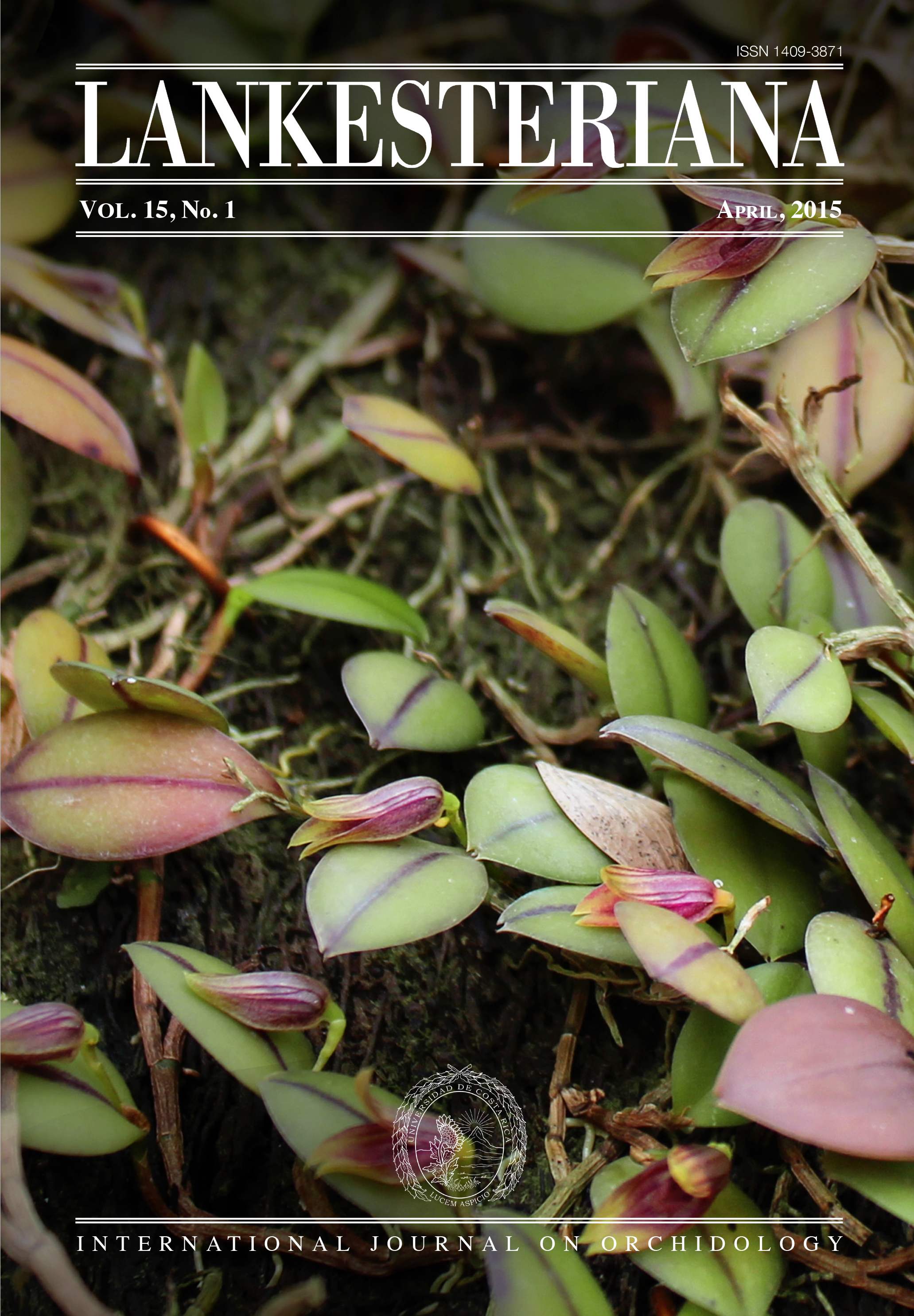A novel seed baiting technique for the epiphytic orchid <i>Rhynchostele cervantesii</i>, a means to acquire mycorrhizal fungi from protocorms
DOI:
https://doi.org/10.15517/lank.v15i1.18525Keywords:
Orchid, Epiphytic, Seed, Baiting, Mycorrhiza, RhynchosteleAbstract
We developed a new and novel seed baiting technique sowing mature seeds of the epiphyitic orchid Rhynchostele cervantesii under natural conditions, We introduced a sponge in each package that may serve as a reservoir for water retention to benefit germination; In three of 22 packets we found protocorms in an early stage of development, six of wich were of sufficient size to warrant fungal isolations; Nine strains were isolated in pure culture and were inoculated on seeds and protocorms under in vitro conditions.
Downloads
Downloads
Published
How to Cite
Issue
Section
License
According to the Open Access policy promoted by the University of Costa Rica, all the papers published by Lankesteriana are licensed under the Creative Commons copyright and can be downloaded free of charge. The journal holds copyright and publishing rights under the CC BY-NC-ND 3.0 CR license.
Before the publication of the materials submitted by the author(s) in LANKESTERIANA, the author(s) hereby assign all rights in the article to the Lankester Botanical Garden.








